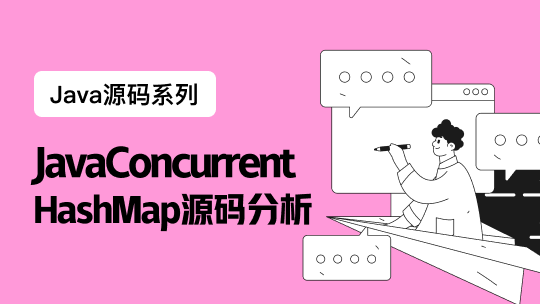EurekaClient也存在缓存,应用服务实例列表信息在每个EurekaClient服务消费端都有缓存。一般的,Ribbon的LoadBalancer会读取这个缓存,来知道当前有哪些实例可以调用,从而进行负载均衡。这个loadbalancer同样也有缓存。
首先看这个LoadBalancer的缓存更新机制,相关类是PollingServerListUpdater:
final Runnable wrapperRunnable = new Runnable() {
@Override
public void run() {
if (!isActive.get()) {
if (scheduledFuture != null) {
scheduledFuture.cancel(true);
}
return;
}
try {
//从EurekaClient缓存中获取服务实例列表,保存在本地缓存
updateAction.doUpdate();
lastUpdated = System.currentTimeMillis();
} catch (Exception e) {
logger.warn("Failed one update cycle", e);
}
}
};
//定时调度
scheduledFuture = getRefreshExecutor().scheduleWithFixedDelay(
wrapperRunnable,
initialDelayMs,
refreshIntervalMs,
TimeUnit.MILLISECONDS
);
这个updateAction.doUpdate();就是从EurekaClient缓存中获取服务实例列表,保存在BaseLoadBalancer的本地缓存:
protected volatile List<Server> allServerList = Collections.synchronizedList(new ArrayList<Server>());
public void setServersList(List lsrv) {
//写入allServerList的代码,这里略
}
@Override
public List<Server> getAllServers() {
return Collections.unmodifiableList(allServerList);
}
这里的getAllServers会在每个负载均衡规则中被调用,例如RoundRobinRule:
public Server choose(ILoadBalancer lb, Object key) {
if (lb == null) {
log.warn("no load balancer");
return null;
}
Server server = null;
int count = 0;
while (server == null && count++ < 10) {
List<Server> reachableServers = lb.getReachableServers();
//获取服务实例列表,调用的就是刚刚提到的getAllServers
List<Server> allServers = lb.getAllServers();
int upCount = reachableServers.size();
int serverCount = allServers.size();
if ((upCount == 0) || (serverCount == 0)) {
log.warn("No up servers available from load balancer: " + lb);
return null;
}
int nextServerIndex = incrementAndGetModulo(serverCount);
server = allServers.get(nextServerIndex);
if (server == null) {
/* Transient. */
Thread.yield();
continue;
}
if (server.isAlive() && (server.isReadyToServe())) {
return (server);
}
// Next.
server = null;
}
if (count >= 10) {
log.warn("No available alive servers after 10 tries from load balancer: "
+ lb);
}
return server;
}
这个缓存需要注意下,有时候我们只修改了EurekaClient缓存的更新时间,但是没有修改这个LoadBalancer的刷新本地缓存时间,就是ribbon.ServerListRefreshInterval,这个参数可以设置的很小,因为没有从网络读取,就是从一个本地缓存刷到另一个本地缓存(如何配置缓存配置来实现服务实例快速下线快速感知快速刷新,可以参考我的另一篇文章)。
然后我们来看一下EurekaClient本身的缓存,直接看关键类DiscoveryClient的相关源码,我们这里只关心本地Region的,多Region配置我们先忽略:
//本地缓存,可以理解为是一个软链接
private final AtomicReference<Applications> localRegionApps = new AtomicReference<Applications>();
private void initScheduledTasks() {
//如果配置为需要拉取服务列表,则设置定时拉取任务,这个配置默认是需要拉取服务列表
if (clientConfig.shouldFetchRegistry()) {
// registry cache refresh timer
int registryFetchIntervalSeconds = clientConfig.getRegistryFetchIntervalSeconds();
int expBackOffBound = clientConfig.getCacheRefreshExecutorExponentialBackOffBound();
scheduler.schedule(
new TimedSupervisorTask(
"cacheRefresh",
scheduler,
cacheRefreshExecutor,
registryFetchIntervalSeconds,
TimeUnit.SECONDS,
expBackOffBound,
new CacheRefreshThread()
),
registryFetchIntervalSeconds, TimeUnit.SECONDS);
}
//其他定时任务初始化的代码,忽略
}
//定时从EurekaServer拉取服务列表的任务
class CacheRefreshThread implements Runnable {
public void run() {
refreshRegistry();
}
}
void refreshRegistry() {
try {
//多Region配置处理代码,忽略
boolean success = fetchRegistry(remoteRegionsModified);
if (success) {
registrySize = localRegionApps.get().size();
lastSuccessfulRegistryFetchTimestamp = System.currentTimeMillis();
}
//日志代码,忽略
} catch (Throwable e) {
logger.error("Cannot fetch registry from server", e);
}
}
//定时从EurekaServer拉取服务列表的核心方法
private boolean fetchRegistry(boolean forceFullRegistryFetch) {
Stopwatch tracer = FETCH_REGISTRY_TIMER.start();
try {
Applications applications = getApplications();
//判断,如果是第一次拉取,或者app列表为空,就进行全量拉取,否则就会进行增量拉取
if (clientConfig.shouldDisableDelta()
|| (!Strings.isNullOrEmpty(clientConfig.getRegistryRefreshSingleVipAddress()))
|| forceFullRegistryFetch
|| (applications == null)
|| (applications.getRegisteredApplications().size() == 0)
|| (applications.getVersion() == -1)) //Client application does not have latest library supporting delta
{
getAndStoreFullRegistry();
} else {
getAndUpdateDelta(applications);
}
applications.setAppsHashCode(applications.getReconcileHashCode());
logTotalInstances();
} catch (Throwable e) {
logger.error(PREFIX + appPathIdentifier + " - was unable to refresh its cache! status = " + e.getMessage(), e);
return false;
} finally {
if (tracer != null) {
tracer.stop();
}
}
//缓存更新完成,发送个event给观察者,目前没啥用
onCacheRefreshed();
// 检查下远端的服务实例列表里面包括自己,并且状态是否对,这里我们不关心
updateInstanceRemoteStatus();
// registry was fetched successfully, so return true
return true;
}
//全量拉取代码
private void getAndStoreFullRegistry() throws Throwable {
long currentUpdateGeneration = fetchRegistryGeneration.get();
Applications apps = null;
//访问/eureka/apps接口,拉取所有服务实例信息
EurekaHttpResponse<Applications> httpResponse = clientConfig.getRegistryRefreshSingleVipAddress() == null
? eurekaTransport.queryClient.getApplications(remoteRegionsRef.get())
: eurekaTransport.queryClient.getVip(clientConfig.getRegistryRefreshSingleVipAddress(), remoteRegionsRef.get());
if (httpResponse.getStatusCode() == Status.OK.getStatusCode()) {
apps = httpResponse.getEntity();
}
logger.info("The response status is {}", httpResponse.getStatusCode());
if (apps == null) {
logger.error("The application is null for some reason. Not storing this information");
} else if (fetchRegistryGeneration.compareAndSet(currentUpdateGeneration, currentUpdateGeneration + 1)) {
localRegionApps.set(this.filterAndShuffle(apps));
logger.debug("Got full registry with apps hashcode {}", apps.getAppsHashCode());
} else {
logger.warn("Not updating applications as another thread is updating it already");
}
}
//增量拉取代码
private void getAndUpdateDelta(Applications applications) throws Throwable {
long currentUpdateGeneration = fetchRegistryGeneration.get();
Applications delta = null;
//访问/eureka/delta接口,拉取所有服务实例增量信息
EurekaHttpResponse<Applications> httpResponse = eurekaTransport.queryClient.getDelta(remoteRegionsRef.get());
if (httpResponse.getStatusCode() == Status.OK.getStatusCode()) {
delta = httpResponse.getEntity();
}
if (delta == null) {
//如果delta为空,拉取增量失败,就全量拉取
logger.warn("The server does not allow the delta revision to be applied because it is not safe. "
+ "Hence got the full registry.");
getAndStoreFullRegistry();
} else if (fetchRegistryGeneration.compareAndSet(currentUpdateGeneration, currentUpdateGeneration + 1)) {
//这里设置原子锁的原因是怕某次调度网络请求时间过长,导致同一时间有多线程拉取到增量信息并发修改
//拉取增量成功,检查hashcode是否一样,不一样的话也会全量拉取
logger.debug("Got delta update with apps hashcode {}", delta.getAppsHashCode());
String reconcileHashCode = "";
if (fetchRegistryUpdateLock.tryLock()) {
try {
updateDelta(delta);
reconcileHashCode = getReconcileHashCode(applications);
} finally {
fetchRegistryUpdateLock.unlock();
}
} else {
logger.warn("Cannot acquire update lock, aborting getAndUpdateDelta");
}
// There is a diff in number of instances for some reason
if (!reconcileHashCode.equals(delta.getAppsHashCode()) || clientConfig.shouldLogDeltaDiff()) {
reconcileAndLogDifference(delta, reconcileHashCode); // this makes a remoteCall
}
} else {
logger.warn("Not updating application delta as another thread is updating it already");
logger.debug("Ignoring delta update with apps hashcode {}, as another thread is updating it already", delta.getAppsHashCode());
}
}
以上就是对于EurekaClient拉取服务实例信息的源代码分析,总结EurekaClient 重要缓存如下:
- EurekaClient第一次全量拉取,定时增量拉取应用服务实例信息,保存在缓存中。
- EurekaClient增量拉取失败,或者增量拉取之后对比hashcode发现不一致,就会执行全量拉取,这样避免了网络某时段分片带来的问题。
- 同时对于服务调用,如果涉及到ribbon负载均衡,那么ribbon对于这个实例列表也有自己的缓存,这个缓存定时从EurekaClient的缓存更新













